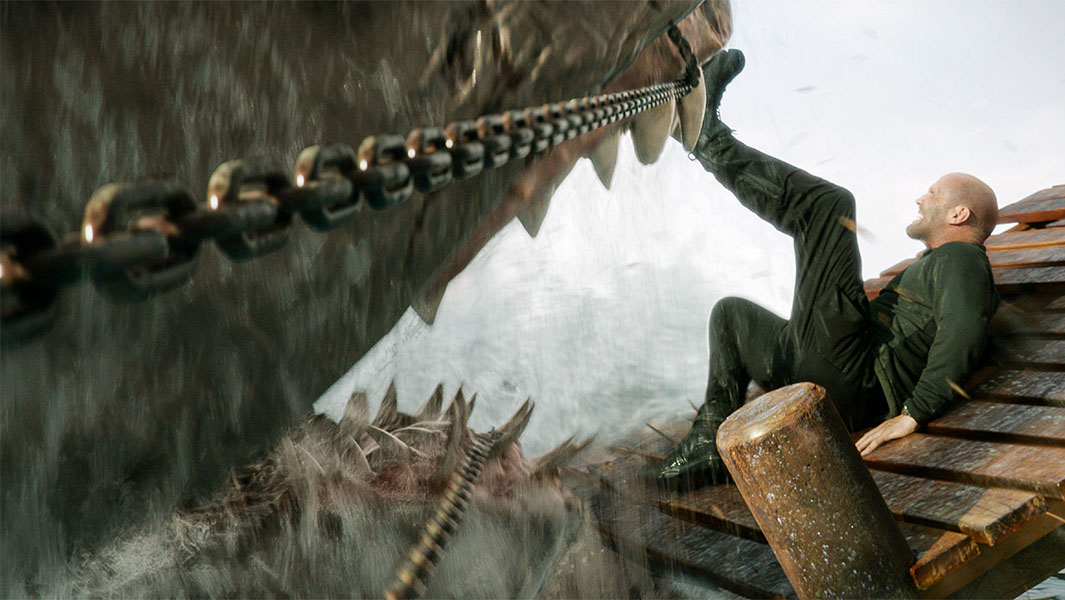How world's largest shark, the megalodon, became terrifying ruler of the oceans

Coming face-to-face with a shark is a scary prospect – but imagine if that shark was 65 ft long!
The megalodon is a terrifying extinct species of mackerel shark that lived millions of years ago.
Despite being long gone from the planet, the idea of the creature is still very much alive.
It’s been at the centre of many movies, including Jason Statham’s epic feature The Meg and sequel The Meg 2: The Trench, hitting cinemas this week.
The actor returns as Jonas Taylor to lead a research team on an exploratory dive into the deepest depths of the ocean.
Of course, they soon find they’re not alone and face a fight for survival against the colossal prehistoric shark.
But just how big was it?
The megalodon holds the record for the largest shark ever, making it the ultimate apex predator.
The extinct animal is one of the largest fish to ever live on Earth, and it’s believed to have reached up to 20 m (65 ft) long.

Its mouth could have been as big as 2 m (6 ft) wide – large enough to gobble up two adult people in one go.
It tended to live in warmer waters and was around during the Early Miocene to Pilocene eras – between 23 and 3.6 million years ago.
To put its size into context for you, the great white shark – the evil man-eating creature in films like Jaws and The Shallows – tends to grow to around 6.4 m (21 ft) at most – more than three times smaller than a megalodon.
The megalodon’s unrivalled size also makes it the largest prehistoric fish, the largest fish ever, and the largest cartilaginous fish ever, which means it has a skeleton made of cartilage.
Giant teeth belonging to megalodon have been discovered over the years, demonstrating just how terrifying it would have been to encounter one of these creatures.
The deepest megalodon tooth was discovered on 22 June 2022, 3,089 metres (10,134 ft) under the water.

It was discovered approximately 240 km (150 miles) south of Johnston Atoll, an unincorporated territory of the United States that is a National Wildlife Refuge and part of the Pacific Remote Islands Marine National Monument.
While fossilized megalodon teeth have been found all over the world, this discovery in the middle of the Pacific Ocean and at such great depth was an unprecedented one.
The tooth was collected as part of a sample of ferromanganese-coated rocks by a remotely operated vehicle during an expedition by the Ocean Exploration Trust. Only when the samples were analysed was the tooth identified.
The overall size of the megalodon was actually estimated based on the size of its teeth, as no complete skeleton has ever been found.
And the word megalodon actually just means “large tooth”.
Emma Bernard, curator of the Natural History Museum’s fossil fish collection, said a lot can be told about what megalodons ate based on their teeth.
She said: “With its large, serrated teeth, megalodon would have eaten meat - most likely whales and large fish, and probably other sharks. If you are that big you need to eat a lot of food, so large prey is required.”
Fossilized whale bones have also been found with cut marks from megalodon teeth etched into them.
Megalodons have often been pictured as a giant great white, but scientists now believe they would have looked very different to that, as they’re actually from a completely different shark family.
It’s more likely they had a much shorter nose and a flatter jaw and extra long pectoral fins to support their size and weight.
The megalodon sounds like it was pretty indestructible, so why and how did it go extinct?
It’s not known for sure when the last one died, but it’s believed to be around 3.6 million years ago.

And it’s thought that the cooling of the planet is what led to them being wiped out.
They were dependent on tropical waters, and the drop in the ocean’s temperatures would have eradicated their habitats.
Their prey could have been slowly wiped out too, or moved to waters where the megalodon couldn’t follow them.
Plus, formation of ice around the poles and the sea levels dropping would have resulted in the loss of pupping grounds for the megalodon, which would have likely given birth to its young close to the shore to protect them from lurking predators in the depths.
The museum’s Emma says she’s confident there’s no way the megalodon could still be alive today somewhere in the ocean’s depths.
“If an animal as big as megalodon still lived in the oceans we would know about it,” she said.
Want more? Follow us across our social media channels to stay up-to-date with all things Guinness World Records! You can find us on Facebook, Twitter, Instagram, Threads, TikTok, LinkedIn, and Snapchat Discover.
Don’t forget, we’re also on YouTube!
Still not had enough? Follow the link here to buy our latest book, filled to the brim with stories about our amazing record breakers.


